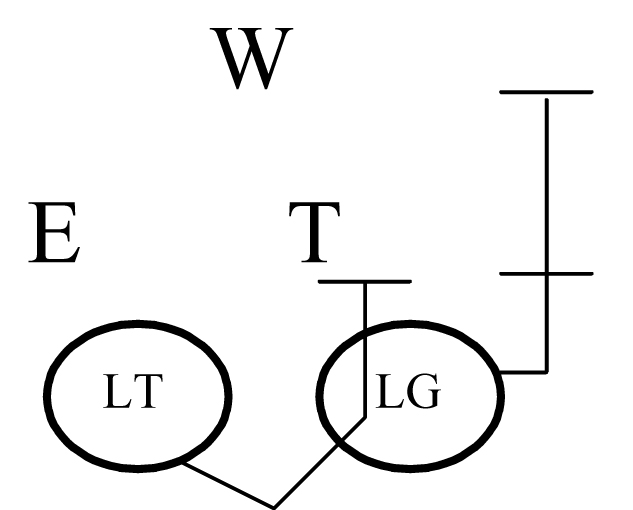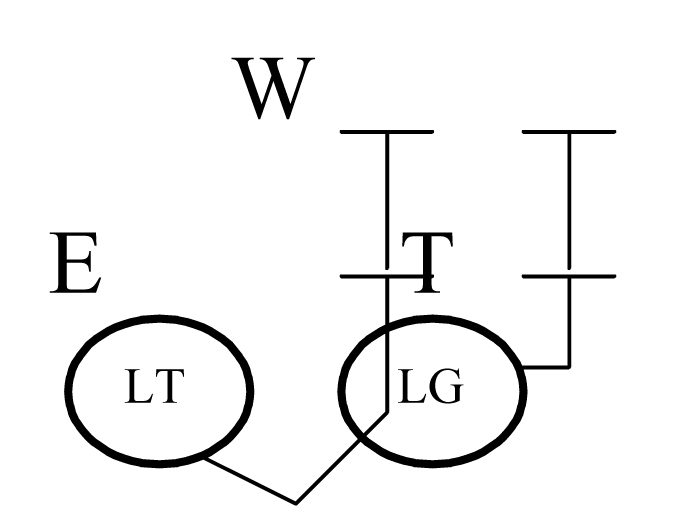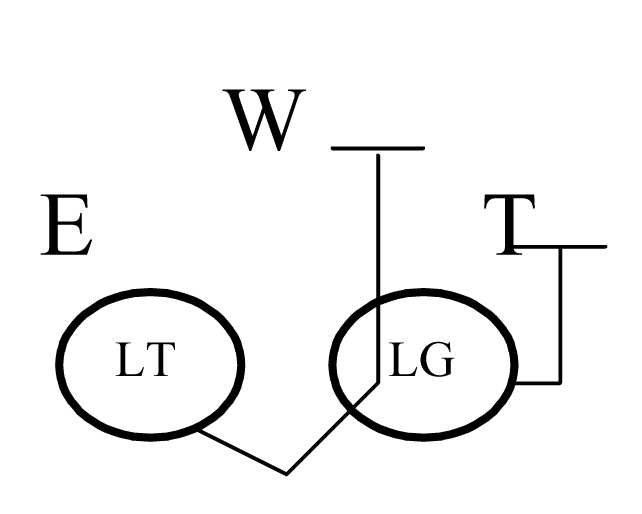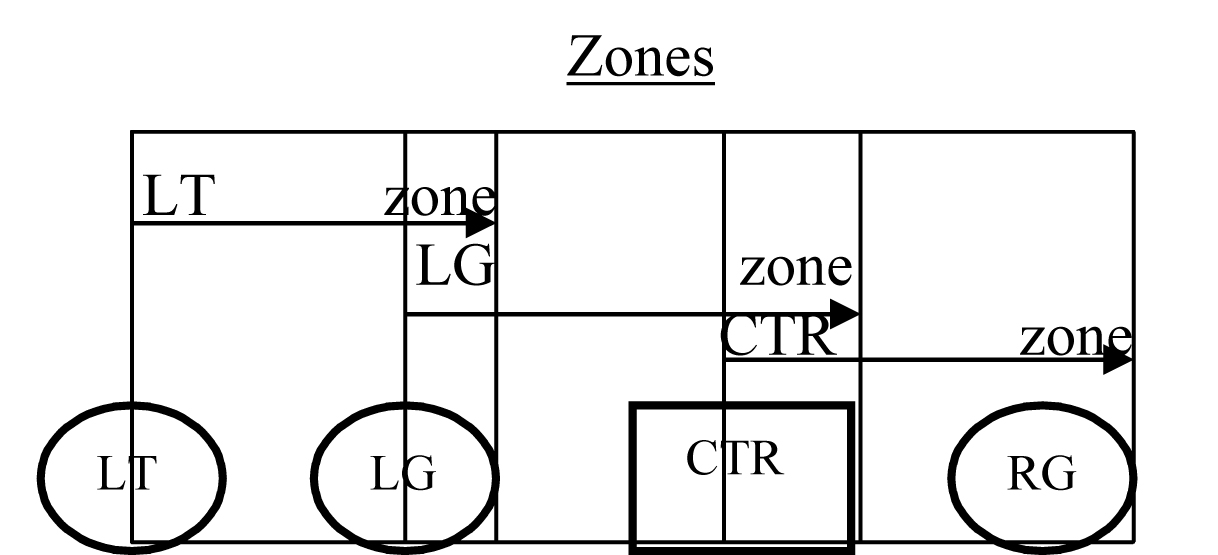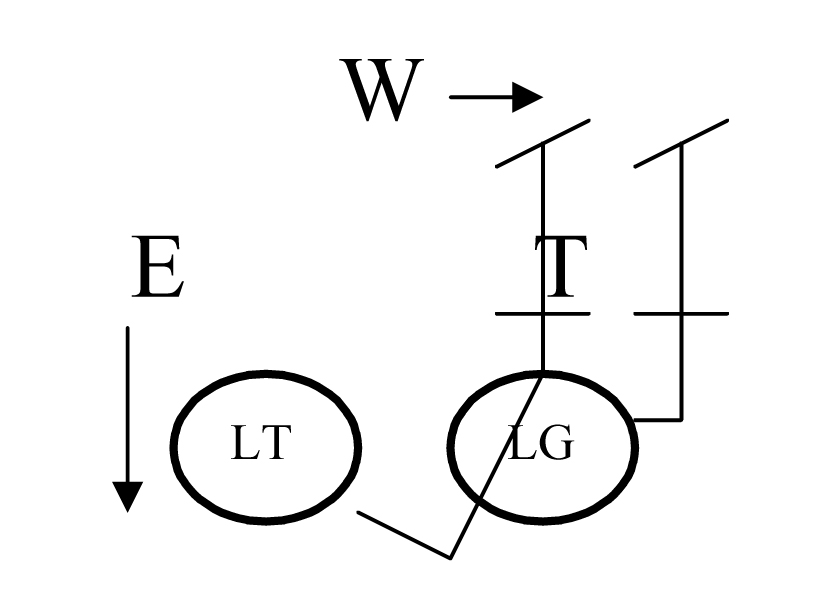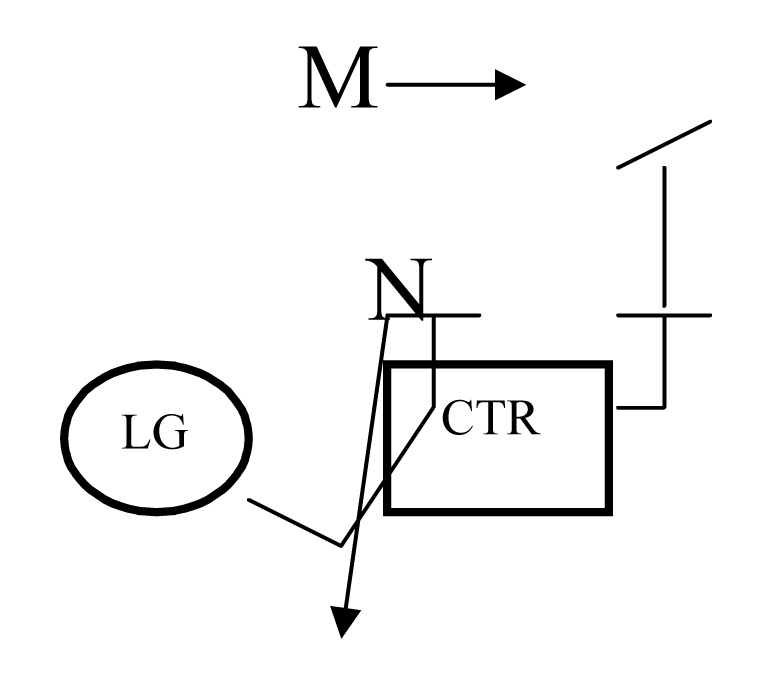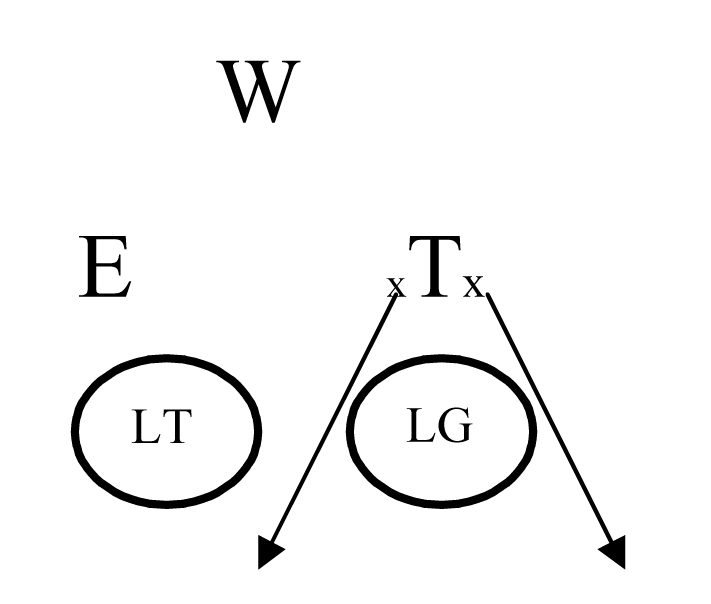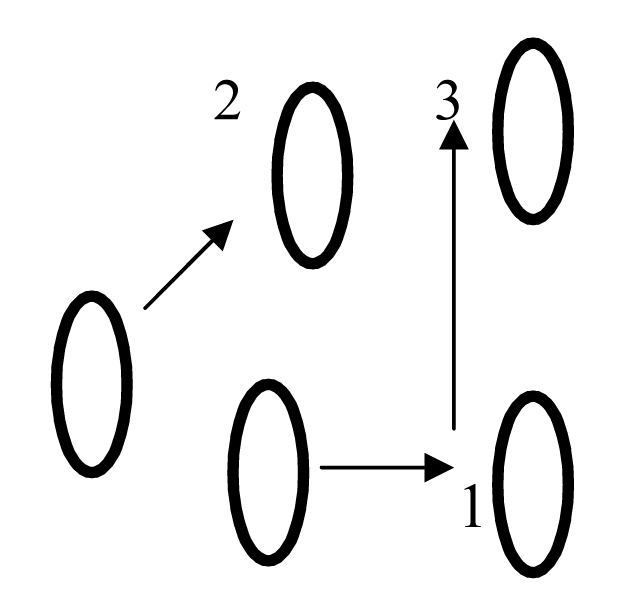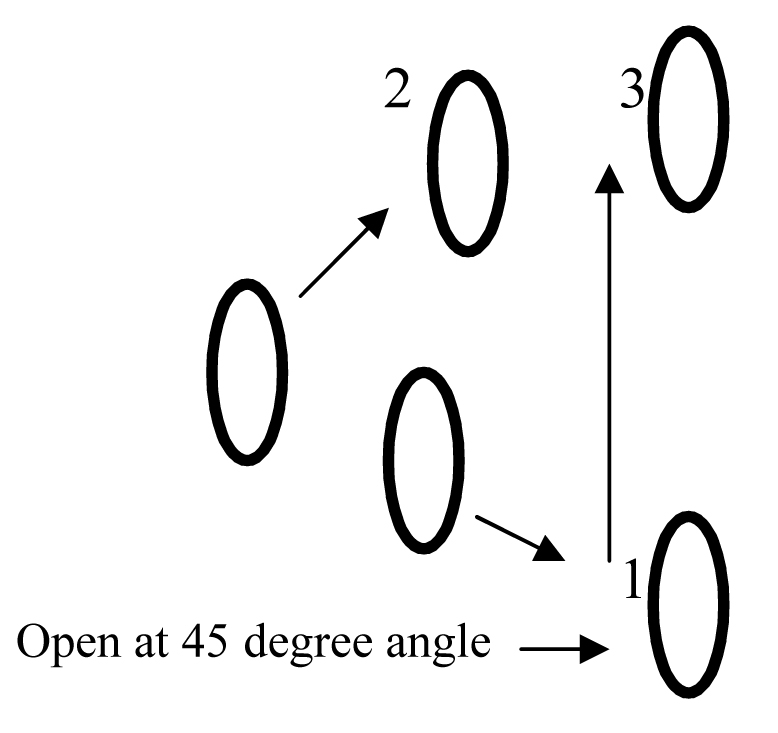Article CategoriesAFM Magazine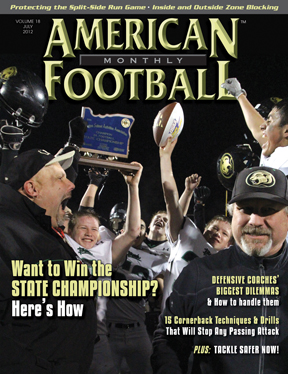
|
Inside and Outside Zone Blockingby: Ken WilmesherrOffensive Line Coach, Grossmont College © More from this issue Inside zone blocking helps create double teams while outside zone blocking is intended to stretch the defense. Zone is different than other offenses because there is no specific point of attack. As a result, the whole defensive front will be stressed. Inside and outside zone is not a man blocking scheme, but rather an area or zone blocking scheme. However, on inside zone you must block the first level first by getting vertical movement on the down defender to a second level defender. The zone play can break down anywhere so both play side and backside blocking assignments are crucial. On inside zone play, stress that effective backside blocking provides cutback lanes for the ball carrier. On inside zone, there will be double teams whereas on outside zone play there will be no double teams except on the edge between the play side tackle and the play side TE. However, the double team will be short lived and evolve into a co-op block between the play side tackle and the TE. Inside zone blocking is designed to get vertical movement on the line of scrimmage by creating double teams on first-level defenders while also getting vertical movement to the second level defender. The vertical movement created by the offensive linemen and the double teams at the first level allows the running back to press the hole for one cut, thus allowing the back to find the crease. Outside zone blocking is designed to stretch the defense by getting defenders to move laterally. By stretching the defense, there is more horizontal push by the offensive linemen. Because of the horizontal push and the aiming point of the running back and by stretching the defense, defenders will move laterally across the field, creating seams for the back. The running back then stretches the defense and the offensive linemen are pushing the defenders laterally. The running back then punctures the defense by finding the seam.
Diagram 1. In the zone concept, we speak in terms of uncovered linemen and covered linemen which are designated by the down defenders alignment. The footwork will vary between uncovered and covered linemen. An uncovered lineman is defined as having no defender aligned either head up or to the play side or call side gap on the LOS, but will be covered at depth by a LB. Covered play side is defined as having a defender aligned in the play- side or call side gap on the LOS. Covered backside is having no defender in the play- side gap, but having a defender head up or in the backside gap on the LOS (Diagram 2).
Diagram 2. It is imperative that uncovered offensive linemen know the down defenders alignment (technique) on the play side or call side covered lineman (Diagram 3).
Diagram 3. There is a greater chance the uncovered lineman will end up blocking the 3 tech or outside shaded defender (Diagram 4).
Diagram 4.
Diagram 5. There is a slight chance the uncovered lineman will end up blocking the 2i tech (inside shaded defender). Each lineman is responsible for a zone or area. For example, the backside tackle’s zone is from his nose to the backside guard’s play side or call side shoulder. The backside guard’s zone is from his nose to the center’s play side or call side shoulder. The center’s zone is from his nose to the right guard’s play side or call side shoulder and so on. However, the play side or call side tight end’s zone is from his nose to the sideline (Diagram 6).
Diagram 6. When teaching the zone concept, I use play side and backside co-op blocks. Co-op blocks are defined as two or more adjacent linemen working together on a down defender on level 1 and a LB on level 2. A term I use is piggyback, which an uncovered lineman uses to handle slants, stunts, and blitzes. The uncovered lineman will try to piggyback the covered lineman on the inside zone (Diagrams 7 and 8).
Diagram 7.
Diagram 8. Backside Co-ops –Terminology
Diagram 9. The uncovered lineman (LT) is reading the hips of the down defender. If the near hip disappears, work to the second level defender. If the near hip comes to the LT, he will make the block. The footwork is different for the zone play than most other offensive plays. Offensive linemen will step simultaneously, taking either a 6-inch lateral jab step or bucket step with the angle of departure at a 45-degree angle to the left or right. There are three types of foot work of uncovered steps for the uncovered lineman. One is that the first step is a 6-inch lateral jab step with the play side foot. The second step is a vertical step through and to the down defenders crotch. The lineman’s base will narrow slightly. It is important to get the second step in the ground quickly. The third step will square the offensive lineman upfield. It is important the shoulders stay square. The covered lineman can do one of two things with his punch – either use a one-arm bench or rip to rise. A great teaching tool for the rip to rise is the Crowther progression (or flipper). The co-op block will force defensive movement off the LOS and he must make sure his eyes are on the second level defender. The second type of foot work involves the first step as a bucket or drop step. The angle of departure is 45-degrees. The angle of departure will not change, but the depth of the bucket step will depend on the alignment of the down defender. I explain to my players their hips should open at a 45-degree angle to the sideline. I also talk in terms of “losing ground to gain ground.” Losing ground allows the uncovered lineman to get on the proper angle to make the block. The second step is a vertical step to and through the defenders crotch. The third step will square the offensive lineman upfield (Diagram 10).
Diagram 10. The third type of footwork is for outside zone play. On outside zone, all linemen will take uncovered steps. The first step is a bucket or drop step. Angle of departure is at a 45-degree angle. The offensive lineman is trying to rip the funnel on the bucket step. The funnel is the elbow, ribs, and armpit of the defender. The entry level of the funnel is between the elbow and ribs while the end of the funnel is the armpit. When ripping the funnel, the lineman needs to stay square. Ripping the funnel will disallow the defender to hold. The second step is an outside reach step trying to step on the outside toes of the defender. The third step will square the offensive lineman upfield (Diagram 11).
Diagram 11. Covered linemen will make thin or thick calls on inside zone play at the LOS. These calls are determined by the LB’s alignment at depth. For example, if the defensive structure is a 4-3, the center will make a defensive recognition call to alert the entire line. The backside guard then makes a co-op block call to alert the backside tackle. The covered lineman will make the thick or thin call on the LOS.
Diagram 12. You can use drills to improve the covered and uncovered steps for inside and outside zone. One drill is the Pipe Drill. In this drill, our offensive linemen work on all their steps: inside and outside zone, down block, base block, and pulling (5 minutes). The second drill is a Board Drill. I have six 2-by-4s, 14 inches long. Place 6 linemen on a line. Then place the boards next to each one’s right foot (inside zone to the right). Their foot should be in the middle of the board and then give them a snap count. From a three-point stance, they will take one-step a 6-inch lateral jab step with the play side foot over the board. Have them hold their step to make sure they are not losing ground. Look for balance and that they have their weight on their instep. Next you can have them take two steps (through the crotch of the defender) and then three more steps. Then place the boards at a 45-degree angle and back to work on the bucket or drop step. Have the linemen place their play side heel at the top right or left corner of the board. Linemen will work on their angle of departure with hips open at a 45-degree angle. Give a snap count and from a three-point stance have your linemen take one step and hold. Then two steps (through the crotch of the defender) and then three steps. Look for balance distribution and weight on their insteps and not the balls of the feet. Then you can work zone steps from the first step to the finish. The boards are used as a visual reference and landmarks for proper footwork on zone play. This is a great off-season drill. Coach Wilmesherr answers your questions on Facebook - just go to to https://www.facebook.com/AmericanFootballMonthly/ |
|
| HOME |
MAGAZINE |
SUBSCRIBE | ONLINE COLUMNISTS | COACHING VIDEOS |
Copyright 2024, AmericanFootballMonthly.com
All Rights Reserved




